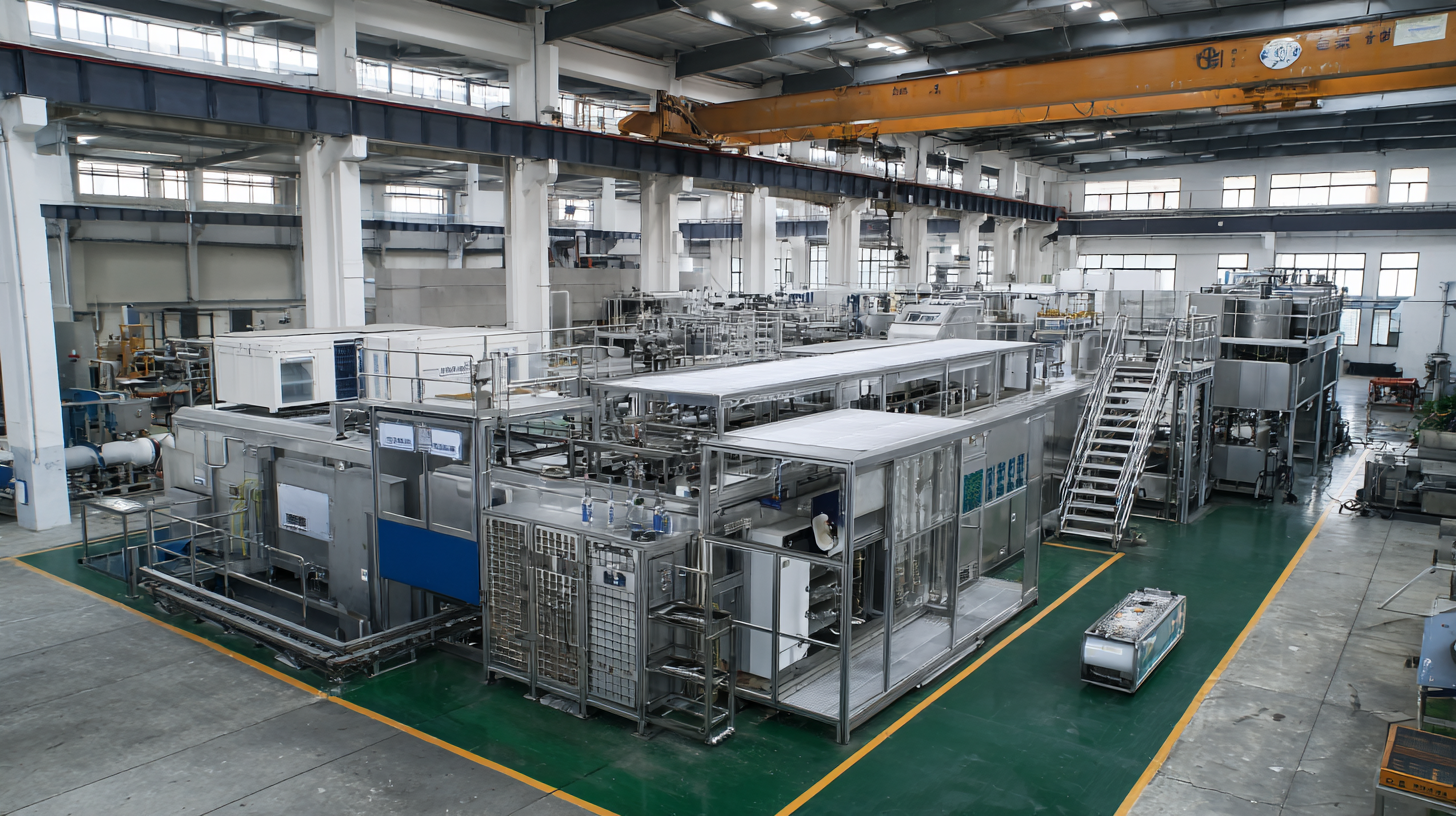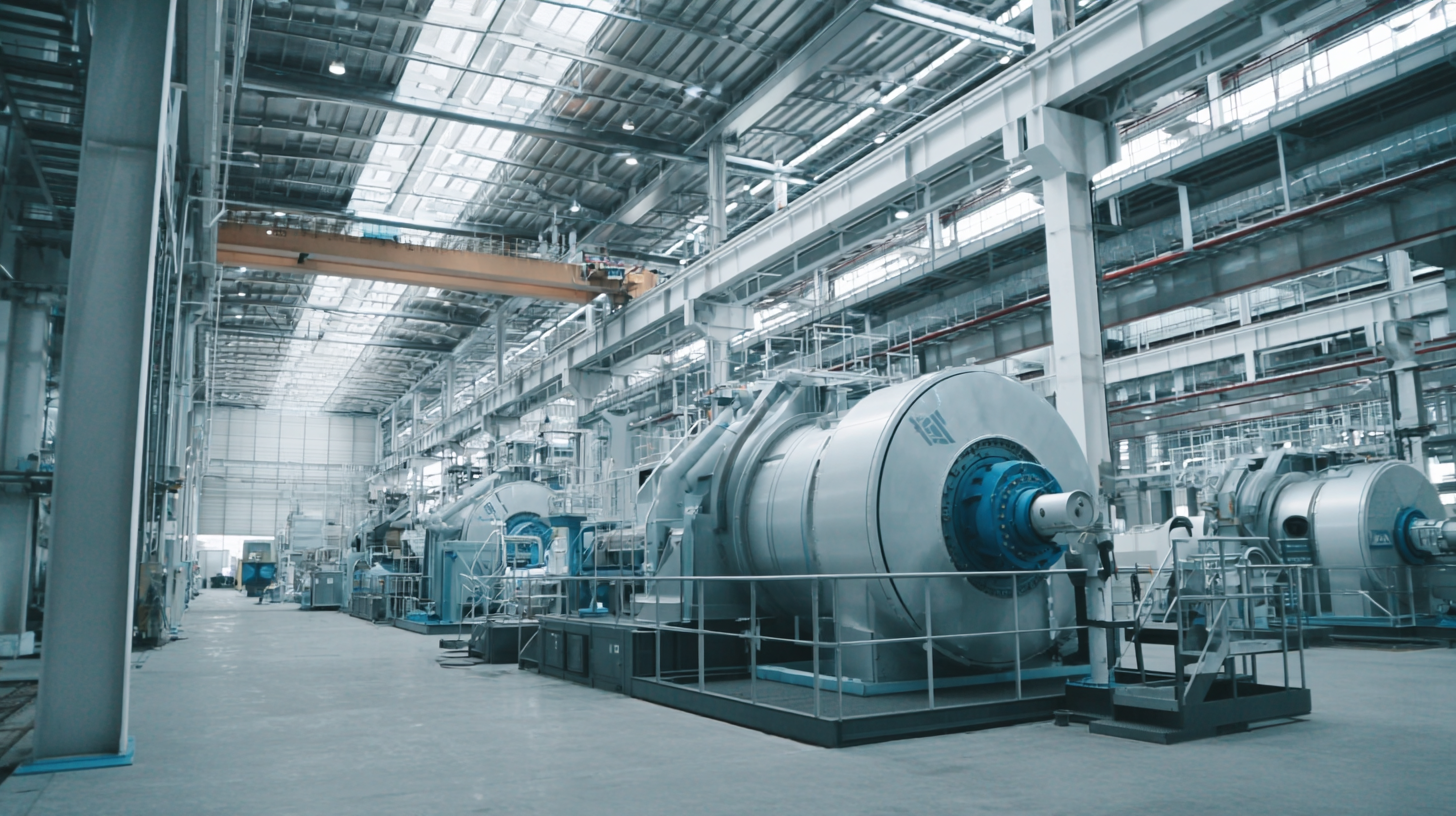As industries increasingly pivot towards sustainable practices, the role of innovative technologies like the Continuous Screw Press becomes more critical than ever. This cutting-edge equipment not only optimizes manufacturing processes but also aligns with ecological goals by minimizing waste and maximizing resource efficiency. In this blog, we will explore the detailed technical parameters of the best Continuous Screw Press options available in the market today. By examining their specifications and capabilities, we will highlight how these machines can significantly contribute to a more sustainable manufacturing future. From improved energy consumption to enhanced product quality, the advancements in Continuous Screw Press technology are setting new benchmarks and offering manufacturers a pathway toward achieving their sustainability targets while maintaining competitive edge. Join us as we delve deeper into this revolutionary technology and its implications for the eco-conscious manufacturing landscape.

The advancement of sustainable manufacturing practices is crucial in addressing the pressing environmental challenges of our time. Continuous Screw Press technology is playing a pivotal role in this transformation. According to a report by the Global Manufacturing and Industrialization Summit, industries are responsible for approximately 20% of global CO2 emissions, highlighting the urgent need for more efficient manufacturing processes.
Continuous Screw Press technology offers a solution by enhancing energy efficiency and reducing waste in production. This modern approach allows for the extraction of valuable materials with minimal energy consumption, potentially reducing operational costs by up to 30%.
Moreover, the integration of Continuous Screw Press technology in sustainable manufacturing aligns with the circular economy principles, as it facilitates the reuse and recycling of materials. As indicated by a study published in the Journal of Cleaner Production, manufacturers utilizing Continuous Screw Press systems have reported a 25% increase in the recovery rates of raw materials. By optimizing resource usage and minimizing environmental impact, this technology not only contributes to the industry's sustainability goals but also positions companies as leaders in eco-friendly manufacturing practices. In a world where sustainability is becoming a competitive advantage, adopting such technologies is not just beneficial but essential for future growth.
The efficiency of modern screw presses in material processing is critical to advancing sustainable manufacturing practices. Recent studies indicate that integrating advanced continuous screw press technology can enhance extraction efficiency by up to 30%, significantly optimizing resource utilization. This improvement is not just a theoretical benefit; industries employing these technologies have reported reductions in energy consumption by approximately 20%, a critical factor as manufacturers seek to lower their carbon footprints.
Key performance metrics such as throughput, energy efficiency, and material yield serve as benchmarks for assessing the capability of screw presses in various applications. For instance, a report from the International Renewable Energy Agency (IRENA) highlights that modern screw presses operating within optimal parameters can achieve a material yield enhancement of up to 15%. Furthermore, with automation and IoT integration, real-time monitoring allows for constant adjustments, leading to improved operational efficiency and reduced waste. These advancements not only contribute to better performance metrics but also align with global sustainability goals, underscoring the importance of continued innovation in screw press technology.

Sustainable manufacturing is increasingly becoming crucial in the global marketplace, particularly in China, as the country strives to meet evolving environmental standards and improve industrial efficiency. According to a report by McKinsey, sustainable practices can significantly reduce emissions from manufacturing, potentially cutting them by up to 70% by 2030. The emergence of strict global standards is driving Chinese manufacturers to adopt advanced technologies, such as continuous screw press systems, which enhance resource efficiency while minimizing waste.
Moreover, as part of the circular economy movement, many organizations are focusing on sustainability-related certifications and initiatives. A study by PwC indicates that companies embracing sustainable manufacturing practices can expect up to a 12% increase in profitability within a decade. This trend is reflected in the increasing adoption of international standards, such as ISO 14001, which guides organizations in establishing effective environmental management systems. The integration of best continuous screw press technology not only exemplifies these trends but also showcases how manufacturers can innovate while adhering to stringent global standards, ultimately fostering an eco-friendly industrial landscape in China.
The push towards sustainable manufacturing is being propelled by groundbreaking technological innovations that are reshaping traditional processes. One of the most significant developments in this area is the advancement of continuous screw press technology. This innovative method not only streamlines production efficiency but also reduces waste and energy consumption, making it more eco-friendly. By replacing older, less efficient systems, businesses can drastically decrease their carbon footprint and contribute to a more sustainable manufacturing landscape.
Moreover, continuous screw presses are designed to optimize resource extraction and material processing. These machines utilize higher pressure and heat, enabling the extraction of maximum yields from raw materials while minimizing byproducts. As industries face increasing regulatory pressure to adopt green practices, such technologies provide a viable solution that aligns economic goals with environmental responsibility. The integration of smart technology, such as IoT sensors and AI-driven analytics, further enhances the capability of continuous screw presses, allowing for real-time monitoring and adjustments that improve resource management and operational efficiency. This synergy of innovation and sustainability promises to redefine the future of manufacturing, making it cleaner and more efficient.
| Dimension | Value |
|---|---|
| Energy Efficiency Improvement (%) | 25% |
| Reduction in Waste Generation (%) | 30% |
| Increase in Recyclable Material Use (%) | 40% |
| CO2 Emissions Reduction (tons/year) | 1500 tons |
| Technological Adoption Rate (%) | 70% |
| Cost Savings Achieved (%) | 20% |
Sustainable manufacturing is no longer just a trend but a necessity in today’s global supply chains. According to a report by McKinsey, optimizing resource efficiency can lead to a potential increase in profit margins of up to 60% for businesses adopting sustainable practices. The integration of best continuous screw press technology not only enhances production efficiency but also significantly reduces waste, contributing to a circular economy. This technology supports various industries, particularly in food processing and biofuels, where minimizing the environmental footprint is crucial for compliance and market competitiveness.

One of the key impacts of sustainable manufacturing on export markets is the increasing demand for eco-friendly products. A study from the International Trade Centre revealed that 66% of consumers are willing to pay more for sustainable goods, which compels manufacturers to innovate and adapt. Establishing a sustainable supply chain can thus open new opportunities for international trade, benefiting companies that prioritize environmental responsibility.
Tips for achieving sustainability in manufacturing include investing in clean technologies and optimizing production processes. Companies should also engage in life cycle assessments to identify areas for improvement. By prioritizing sustainability, manufacturers not only reduce costs but also enhance their brand reputation and marketability on the global stage.
